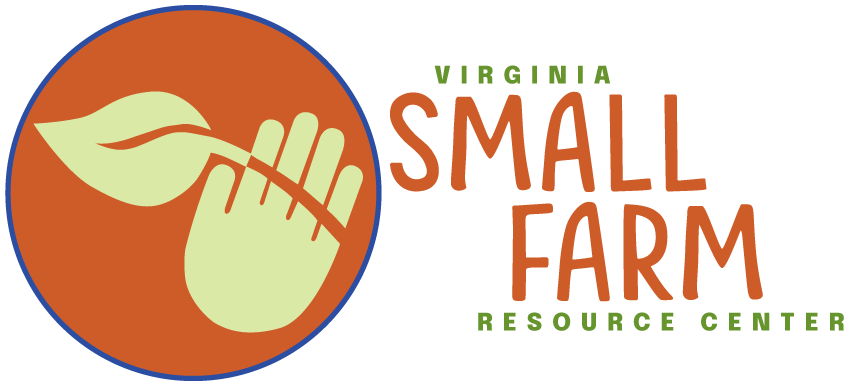By Mark Schonbeck, VABF Policy Liason
Agricultural Appropriations Update
2024 is done – on to Fiscal Year 2025
On March 8, Congress reached agreement on six Appropriations bills for the rest of Fiscal Year 2024 (through Sept 30) including Agriculture. Sustainable Agriculture Research and Education (SARE) suffered a 4% cut (from $50M to $48M), the Agriculture and Food Research Initiative (AFRI) was also trimmed, while the Organic Transitions research program (ORG) was level-funded and the Farmer Opportunities Training and Outreach (FOTO – beginning and socially disadvantaged farmers) did not receive discretionary funding though its mandatory funding remains unchanged.
Although the cuts were disappointing, the National Sustainable Agriculture Coalition (NSAC) welcomes the completion (at last – six months overdue!) of the 2024 appropriations process and is preparing to campaign hard for better funding for these and other key programs in Fiscal Year 2025. The bright spots in the 2024 bill is that it included no destructive riders to undermine USDA efforts to regulate livestock markets, respond to emerging farmer needs, or build racial equity in the agricultural sector.
Farm Bill Update
With 2024 appropriations now completed, the House and Senate Agriculture Committees can focus on the new Farm Bill. So, advocacy for a farmer- soil- and climate-friendly Farm Bill continues. In addition to the Fair Credit for Farmers Act (above), current priorities include:
- Make Inflation Reduction Act (IRA) conservation funding permanent. Support for climate smart agricultural and forestry practices must become a regular part of the Farm Bill. See NSAC blog posts on positive impacts of IRA conservation funding, including increased dollars available to farmers, links to 20 farmer stories and more stories, and helping farmers make their operations more resilient to extreme weather. Also check out this report on a January 11 Congressional briefing with several farmers.
- Strengthening Organic Agricultural Research (SOAR) in the House and Organic Science and Research Investment (OSRI) in the Senate to expand organic research funding and establish USDA-wide coordination for organic research.
- The Converting Our Waste Sustainably (COWS Act), modeled on California’s Alternative Manure Management Program, would help livestock farmers reduce methane emissions and protect water through manure composting and pasture-based production.
- The Innovative Practices for Soil Health Act [MS1] would increase technical and financial support for farmers undertaking perennial production and conservation systems and make other improvements to EQIP and CSP.
- Reforms to Crop Insurance and Commodity Payments programs so that they support smaller to midscale diversified farms, not just industrial scale commodity production.
- The Strengthening Local Meat Economies Act and the Strengthening Local Processing Act would support independent livestock farmers and meat processors.
- Click here for more information on these and other Marker Bills that NSAC has initiated, helped to shape, or supported.
Call your Senators and your Representative today to urge them to advocate for including the above measures in the Farm Bill. Once the draft farm bills reach the floor of both chambers, all Members of Congress play a significant role in shaping the final Farm Bill that goes to the President to be signed into law. When you call, ask to speak with the staff person on agricultural issues. You can reach Senator Mark Warner at 202-224-2023 and Senator Tim Kaine at 202-224-4024. If you do not know your Representative’s phone number in DC, call the Capitol Hill Switchboard at 202-224-3121.
James River Buffer Program
Designs and installs riparian forest buffer at no cost to you
If your farm is located within the James River watershed and you would like to plant a forested buffer to protect water quality, provide wildlife habitat, and improve farm biodiversity, check out the James River Buffer Program. The James River Association, the Virginia Department of Forestry, and the Chesapeake Bay Foundation are working with farmers and landowners across the middle and upper James River watershed to restore or create forest buffers that improve the quality of local waterways. The program works with you to select tree species, plants the buffer, and provides maintenance for the first three years at no cost to you. Plantings can include income generating species such as sugar maple for syrup production.
Other NSAC News Stories and Blog Posts
Accessing the Whole Farm Revenue Protection (WFRP) Program
Crop Insurance for Diversified Farms
The USDA Risk Management Agency (RMA) has published a directory to help farmers find a nearby insurance agent who sells WFRP coverage. Check the NSAC blog on WFRP for more information.
Funding Available through the Local Agriculture Markets Program (LAMP)
Application Deadline May 14, 2024
On February 27, the USDA announced $26 million in competitive grant funding for LAMP programs including value added, farmers’ market, and local food promotion programs. The USDA has adopted several program changes recommended by NSAC to increase accessibility. For more information including how to apply, check the NSAC blog post on LAMP.
2022 Agricultural Census
NSAC posted a review of the 2022 Agricultural Census in which overall finding were discussed. Since the last census in 2017, trends toward fewer and larger farms continued, the rate of Black farm land loss increased, and numbers of organic and transitioning farms dipped. The one bright spot is a strong uptick in the numbers of beginning farmers who tend to have smaller farm operations. This trend could become a turning point for some of the other trends.
Local Food Systems and Supply Chains Grow
Initiatives through the 2018 Farm Bill and through the pandemic relief funding bills drove a substantial increase in the volume of farm products marketed through local and regional venues such as food hubs and retail outlets. These developments have positively impacted local and regional meat production and processing as well as produce and other food groups, as outlined in this NSAC blog on food systems.

